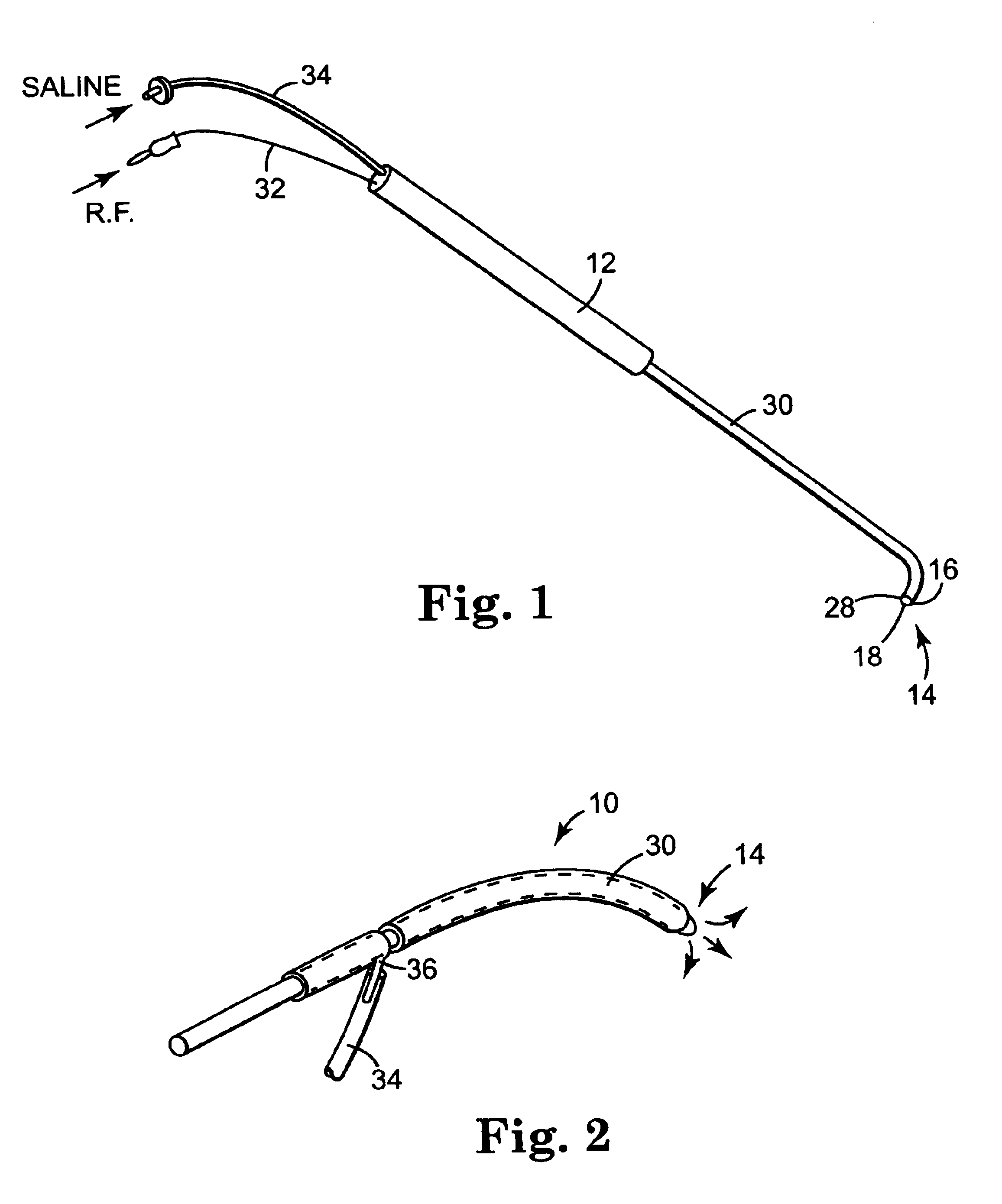Pen-type electrosurgical instrument
- Summary
- Abstract
- Description
- Claims
- Application Information
AI Technical Summary
Benefits of technology
Problems solved by technology
Method used
Image
Examples
Embodiment Construction
[0022]Referring to FIG. 1, there is shown a perspective view of a fluid-assisted electrocautery device 10 in accordance with one embodiment of the invention. Electrocautery device 10 comprises a handle 12 and an electrocautery electrode / tip 14. Handle 12 is preferably made of a sterilizable, rigid, and non-conductive material, such as nylon or the like. Electrode / tip 14 is attached to handle 12.
[0023]In accordance with one aspect of the invention, electrode / tip 14 is preferably implemented using a hollow cylindrical tube 16 with a “ball point” at its distal end, as shown in the greatly enlarged perspective and cross-sectional views of FIGS. 3 and 4, respectively. As can be seen, a ball 18 is retained in a cavity formed by crimping metal tube 16 around ball 18. Both ball 18 and tube 16 are preferably made of an electrically conductive metal such as stainless steel. Tube 16 is crimped both proximal and distal to ball 18 at 20 and 22, respectively.
[0024]Ball 18 may have any diameter bu...
PUM
 Login to View More
Login to View More Abstract
Description
Claims
Application Information
 Login to View More
Login to View More - R&D
- Intellectual Property
- Life Sciences
- Materials
- Tech Scout
- Unparalleled Data Quality
- Higher Quality Content
- 60% Fewer Hallucinations
Browse by: Latest US Patents, China's latest patents, Technical Efficacy Thesaurus, Application Domain, Technology Topic, Popular Technical Reports.
© 2025 PatSnap. All rights reserved.Legal|Privacy policy|Modern Slavery Act Transparency Statement|Sitemap|About US| Contact US: help@patsnap.com



